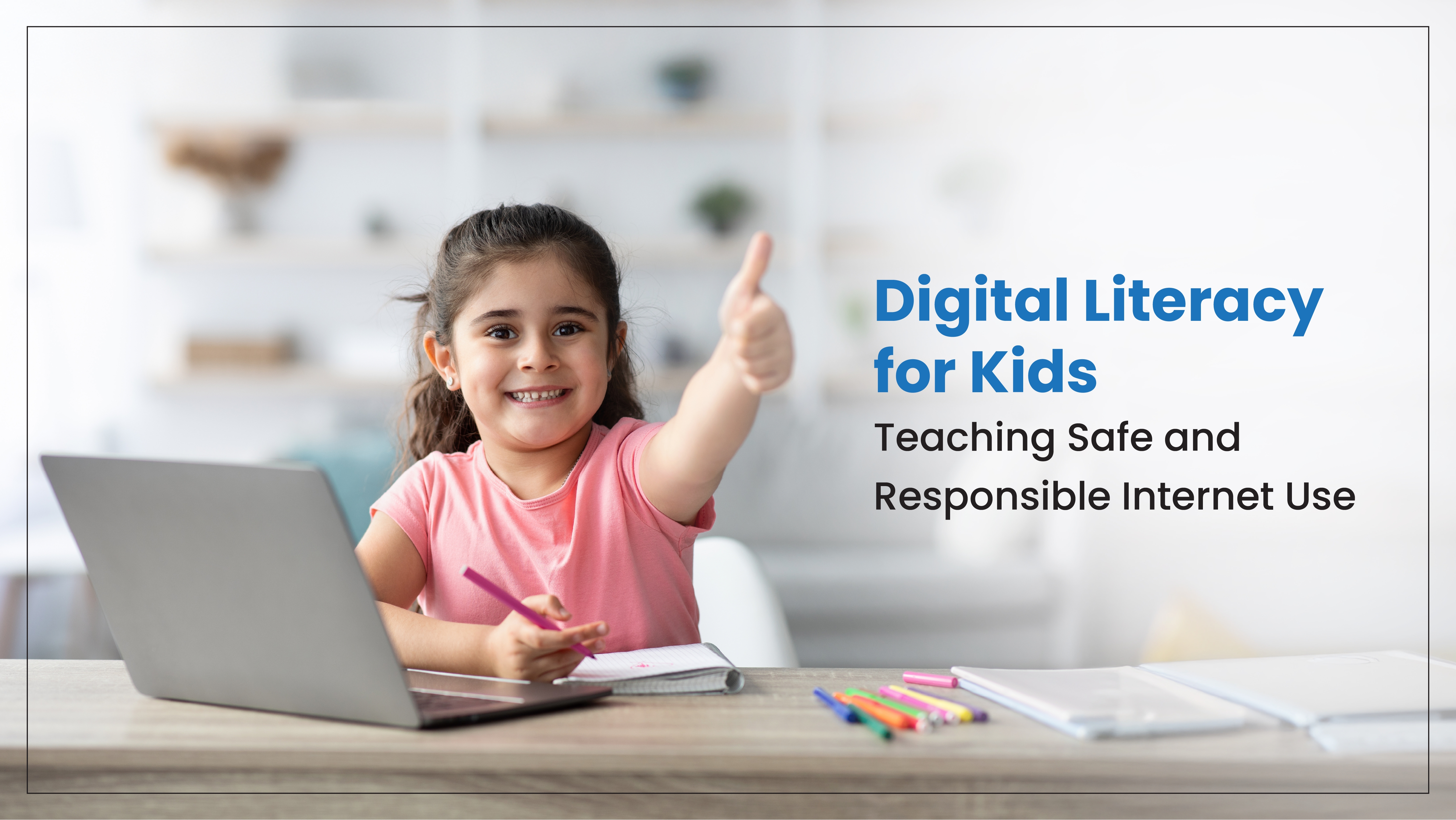In today’s digital age, teaching digital literacy to kids is essential. With children having more access to the internet, it becomes crucial for them to understand how to navigate this vast space safely and responsibly. While the internet offers endless opportunities for learning and creativity, it also comes with risks that children should be aware of. Parents and teachers must focus on instilling responsible habits to ensure that kids can make the most of their online experience while staying safe.
Here are 8 important aspects of teaching safe and responsible internet use for kids:
1. Understanding Online Privacy: The first step towards responsible internet use is teaching kids the importance of online privacy. Children should know not to share personal information like their home address, phone number, or school details with strangers online. Setting strict privacy settings on social media and games is also essential.
2. Recognising Safe Websites: Children should be guided on how to identify secure and reliable websites. Educating them about the significance of secure URLs (those beginning with “https”) and recognising trustworthy platforms can help them avoid unsafe content.
3. Avoiding Online Scams: Kids must be aware of online scams, including phishing and deceptive ads that ask for personal information. Teaching them to be cautious when clicking on unfamiliar links or pop-up ads can prevent potential security breaches.
4. Cyberbullying Awareness: Digital literacy for kids also includes understanding the risks of cyberbullying. Kids should know how to recognise bullying behaviour and be encouraged to speak up if they are targeted or witness cyberbullying. Parents and teachers should create open communication channels to discuss any incidents.
5. Balancing Screen Time: An important part of responsible internet use is maintaining a healthy balance between online activities and other aspects of life. Children should be taught to manage their screen time effectively, ensuring they engage in physical activities, studies, and social interactions outside the digital world.
6. Developing Critical Thinking Skills: To ensure safe browsing, children need to develop critical thinking skills that allow them to evaluate the information they encounter online. They should be taught how to differentiate between credible and false information and how to question the authenticity of online content.
7. Creating Strong Passwords: A key element of safe internet use is teaching kids to create strong, unique passwords. They should understand the importance of using a mix of letters, numbers, and symbols, and avoid sharing their passwords with friends or anyone outside their trusted circle.
8. Parental Controls and Monitoring: Parents play a vital role in ensuring safe and responsible internet use. Installing parental controls and monitoring online activities can provide a safe digital environment. Regular conversations with children about the content they consume will help create a safer internet experience.
In a world dominated by digital interactions, teaching kids the importance of digital literacy and safe internet practices is non-negotiable. By fostering these skills, children will not only stay protected but also develop the knowledge and critical thinking necessary to thrive in the digital space.


Stay connected, stay informed, and thrive with Narayana Educational Institutions!
